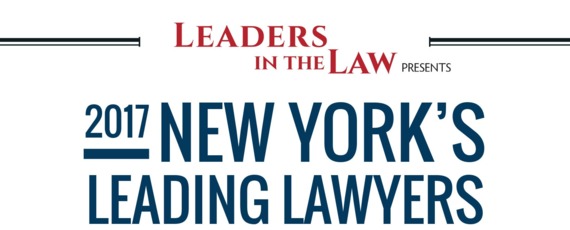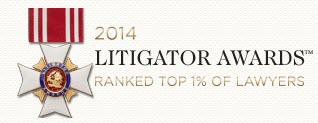The seconds and minutes after a car crash are often chaotic. You may feel confused and in shock. But the steps you take immediately after a collision will impact your ability to recover financial compensation for physical injuries, mental anguish, and property damage.
Here, New York City car accident attorneys with Friedman, Levy, Goldfarb, Green & Bagley, P.C. explain why evidence is critical and how to collect it if you are involved in a life-changing motor vehicle accident.
Why Gathering Evidence is Crucial in Car Accident Cases
A serious auto accident can have far-reaching effects on a person’s mental, physical, emotional, and financial well-being. Accident victims may need extensive medical care. They may experience pain and disability that keeps them from working and earning income. Car accident case evidence is the key to recovering financial compensation for these losses.
The Role of Evidence in Proving Fault
It only takes seconds for a devastating accident to happen. As a crash victim, determining precisely what went wrong and who is at fault is often difficult. Evidence from the scene establishes the facts: what happened, why it happened, and who is to blame.
Without these critical details, the at-fault driver is likelier to deny blame, avoid consequences, and escape justice. Because accident photos, camera footage, and eyewitness accounts are tough to disprove, these and other evidence will bolster your claim and increase the likelihood of a fair settlement or favorable court outcome.
The Impact of Evidence on Settlement Offers
The presence of solid evidence is one of the primary factors that influence car accident settlements. When negotiating with an at-fault driver’s insurance company and car accident attorneys, the evidence you and your attorneys obtain helps establish liability and position you for a positive outcome.
Compelling evidence makes it harder for the other party to dispute the facts or offer less than you deserve. With indisputable documentation that proves how and why a crash occurred, you can maximize your settlement and potentially avoid the time and stress of court proceedings.
Types of Evidence to Collect After a Car Accident
Car accident evidence comes in many forms. Knowing what to look for after an unexpected crash is helpful if it should ever happen to you.
Physical Evidence at the Scene
Physical evidence refers to objects at the scene that help prove how and why the accident happened. Physical evidence can include:
- Photos
- Video footage
- Cell phone usage records
- Skid marks and tire tracks
- Debris from the accident
- Road and weather condition reports
- Damage to vehicles and other property
- “Black box” data and other vehicle information
If you are unsure whether certain physical evidence is helpful for your claim, always assume it is and save it. Once the accident scene is cleared, these valuable details can be lost forever.
Your personal injury attorney works with you to gather this information and carefully reviews it to determine if it benefits your case.
Dashcam and Surveillance Footage
Video footage from vehicle dashcams and nearby homes and businesses provides unbiased, objective accident evidence. It shows the events that led to the crash, clearly establishing fault and adding credibility to your account of the event—and your case overall.
If you are wrongly accused of liability for an accident, footage from the scene can establish the facts and protect you against these allegations.
Dashcam Tips for Preserving Evidence
Anyone considering equipping their vehicle with a dashboard camera should choose a model with certain key features. A G-sensor that preserves footage after a crash is detected is essential if the footage is to be used as evidence in an accident claim. Night vision records after sunset and parking mode records when the vehicle is parked and unattended.
After a crash, back up your footage to a separate, secure device before the cam overwrites it to save space.
Witness Statements
Sometimes, the most powerful evidence in a car accident case is an account of someone who saw or experienced the crash. Statements from individuals involved in the collision and bystanders who witnessed the event can be the most powerful types of evidence used in civil accident claims.
Medical providers who diagnose and treat the accident victim can also provide witness statements regarding the victim’s injuries and prognosis. Forensic experts specialize in analyzing physical evidence to determine the factors contributing to a collision, including accident reconstruction. Their findings are critical for establishing causation and liability for motor vehicle accidents.
Police Reports
New York State requires motorists to contact the police and file a crash report after a car accident if:
- Someone is injured or killed
- Property damage over $1,000 occurs
- A domestic animal is injured or killed
- Damage occurs to a parked car or other property, and the owner cannot be located
The officer who responds to the scene should document injuries and property damage, and assess the circumstances of the accident to the best of their ability. Their police report sheds light on how the crash occurred and who is responsible.
Medical Records and Bills
Medical records document how the victim was harmed in a car accident and the treatment they received. They describe future care needs and treatment, rehabilitation, and medication costs. Medical evidence includes the findings of tests and exams, a detailed treatment record, and recommended follow-up care like occupational or physical therapy.
This evidence establishes a link between the accident and the victim’s injuries. Because medical records are protected by federal privacy laws, personal injury attorneys must obtain your consent and formally request them on your behalf.
Common Mistakes to Avoid When Gathering Evidence
You should never rely solely on law enforcement officials to obtain evidence after a car accident. Once you have checked yourself and others for injuries and called 911 for help, gathering evidence should be the next step.
Here are some common missteps to avoid when documenting the accident scene:
- Delaying Evidence Collection
You have a short window of time to collect evidence after a crash. If the other party is responsible, they may act quickly to destroy evidence or leave the scene. Take photos of physical injuries and property damage immediately.
It’s also important to record conditions that contributed to the accident, including missing or malfunctioning traffic signs and signals, unsafe road surfaces, and poor visibility. If you cannot do so because of your injuries, ask someone at the scene for assistance. If you wait to document these details, liable parties may take steps to correct them—casting doubt on your claim.
- Not Seeking Medical Attention
Another common mistake is not seeking medical care after a crash. While some accident injuries are evident after an accident, others do not have immediate or obvious symptoms. Conditions like whiplash, head, neck, and spine injuries, and internal bleeding can develop and worsen over time.
For that reason, it’s vital to see a healthcare provider shortly after a crash to check for these and other conditions that, left untreated, may lead to serious health complications. Delaying medical treatment is also problematic in terms of evidence. If too much time elapses between the accident and medical treatment, the other party’s insurance provider and attorneys can raise doubts that your injuries are related to the crash.
- Failing to Seek Legal Advice Early On
Another common oversight among car accident victims is waiting too long to seek legal counsel. They may believe their case is “open and shut” and don’t fully understand the importance of legal consultation after an auto accident.
Navigating a car accident claim without an attorney could cost you the full and fair settlement you deserve. You could unwittingly accept an unfair settlement or have your statements used against you. Without a trusted legal advocate, there is no one to protect your interests and your rights throughout the legal process.
How a Lawyer Can Help with Gathering and Preserving Evidence
With over five decades of experience, Friedman, Levy, Goldfarb, Green & Bagley, P.C. personal injury lawyers are the right team to lead your case. We have the skills and determination to take on insurance companies and lawyers who do not want to take accountability for their client’s actions.
We dedicate considerable time and resources to car accident evidence collection, allowing us to build the most compelling case possible. We pursue every possible avenue to prove how and why the crash happened—and show how it has impacted your life. We fight hard for settlements and court awards to help victims rebuild and move forward after a devastating personal injury.
Call or connect online to schedule a free consultation today. From our office in New York City, Friedman, Levy, Goldfarb, Green & Bagley, P.C., represent clients in Manhattan, the Bronx, Brooklyn, Long Island, Queens, Staten Island, Westchester County, Rockland County, and Hudson Valley, New York.






